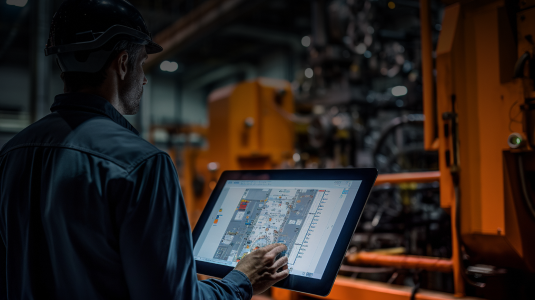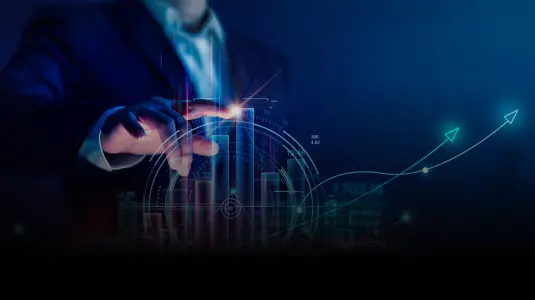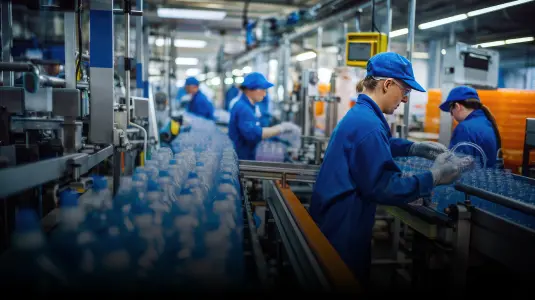Table of Contents
In today’s era, all devices are connected right from smartphones and cars to home appliances, thermostats and sensors. Internet of Things (IoT) continues to grow as the number of interconnected devices keeps on increasing. The aim is to make these devices interact in a cohesive manner to create a connected world that enables communication between devices to exchange information and perform actions without human assistance. This is machine-to-machine (M2M) communication.
Both trends drive the number of connected devices significantly and pose challenges, as well as opportunities for telecom operators. There are several industries experiencing changes due to Internet of Things; Media and Entertainment is one such industry experiencing massive changes.
IoT solutions company offers services generating different types of content. Teams in different areas might use drones to gather footage in restricted or prohibited areas. This information can be used to generate scenes showing the devastation of war zone.
While nearly all types of media and entertainment businesses will benefit from the IoT, publishers and broadcasters are ahead of the curve. Many can already harvest various forms of data—location, behavioral, consumer-preference and demographic among them—from a variety of devices and systems, construct detailed consumer profiles and use them to create and instantly deliver personalized content across multiple screens.
IoT Challenges
For all of the opportunities that IoT offers, there are some significant risks that M&E companies need to address before they adopt IoT:
Regulatory — Government organizations and legislators around the globe are now taking a shot at tending to the various difficulties IoT makes.
Privacy — Protect privacy of data collected, voluminous information and contextualize contributions from sensors and other IoT arrangements.
Cybersecurity — Increase troublesome as IoT associates more gadgets, programming, machines and people.
Legal — Understanding legal challenges such as gadget breakdown, ownership, and more
Scalability — IoT achieves minimum amount can M&E organizations receive the full money related rewards of their customized substance ventures.
Sensor driving IoT expansion for M&E
How Sensors Help Entertainment and Media Companies
The use of sensors within IoT devices – think wearables, touches from phones, speech and command recognition – will be the biggest data unlocking potential, and this is driving the change among the marketers.
The growing sophistication of the media and entertainment solutions makes it possible for devices to read, gauge and understand consumers. Sensors measure physical inputs and transform them into raw data, which is digitally stored for access and analysis.
Here are the practical applications of sensors.
- Smart cities
- Environment, water, metering
- Security and emergency services
- Retail
- Logistics & Support
- Agriculture, farming, domestic
- Home automation and e-health
Sound and Acoustics
Identifies sound and voice directions, as well as measure and find echo, as well as nearness or nonattendance of articles.
Applications: Receivers, handsets, ultrasonic sensors, sound frameworks, speakers, headsets, cameras and unique mark detecting applications.
Detect temperature or warmth.
Applications: Infrared sensors, cameras, wearables, and more.
Motion and Speed
Detect and understand patterns such as turn, increasing speed, and respond to speed.
Applications: Video and portable gaming, 3-D movement following items, 3-D character activity, sports science, camera adjustment, electric console and cell phones.
Optic, light and imaging — Measure different results utilizing light.
Applications: picture sensor for HD video information, video pictures, warm imaging, wearables, cameras, webcams and cell phones.
Proximity & Position
Recognize stature and width. Perform non-contact identification of items, sense UV record, surrounding light, long range closeness, pulse or heartbeat, movement with 2-D or 3-D signals.
Applications: wearables, GPS, cameras, cell phones, diversion comforts and associated vehicles.
Pressure and power
Sense weight connected. Measure power and weight. Recognize contact and contact weight.
Applications: augmented reality, motion acknowledgment, video and portable gaming, contact screen gadgets, cameras, security and keen home.
Magnetic
Measure the quality and heading of an attractive field. Applications: security and following frameworks, diversion reassures and associated vehicles.
Flow, fluid, concoction and gas — Measure the stream rate of a fluid or gas. Recognize room stickiness. Sense and screen perilous synthetic components (carbon monoxide, radiation).
Applications: Cameras, wearables, cell phones, keen home, security frameworks and associated vehicles.
Taking Personalization the Next Level
Sensors can gather information and specific attributes of users that allows media companies to obtain personalized information for targeted promotion or advertising. For instance, ads can be highly contextual based on the needs of the individual. Connected cars can provide increased level of communication such interfaces or applications to access mails, music, live streaming and more.
To leverage IoT, media companies will need to develop operating model, organization and technology capabilities. The organizations with a futuristic preview will have a data-driven infrastructure and management as independent units will move quickly to create new products across different platforms and apps. Media and entertainment companies will need to combine mixture of creative roles with data-oriented roles.
Conclusion:
The IoT speaks transformation change in perspective and business approach for enterprises, media and entertainment – and now is the time for media operations to evaluate the opportunities. With IoT-connected devices generating an increasing volume of data, capabilities such as data collection, analysis and interpretation will be crucial in discerning new monetization opportunities in both B2B and B2C segments.










































